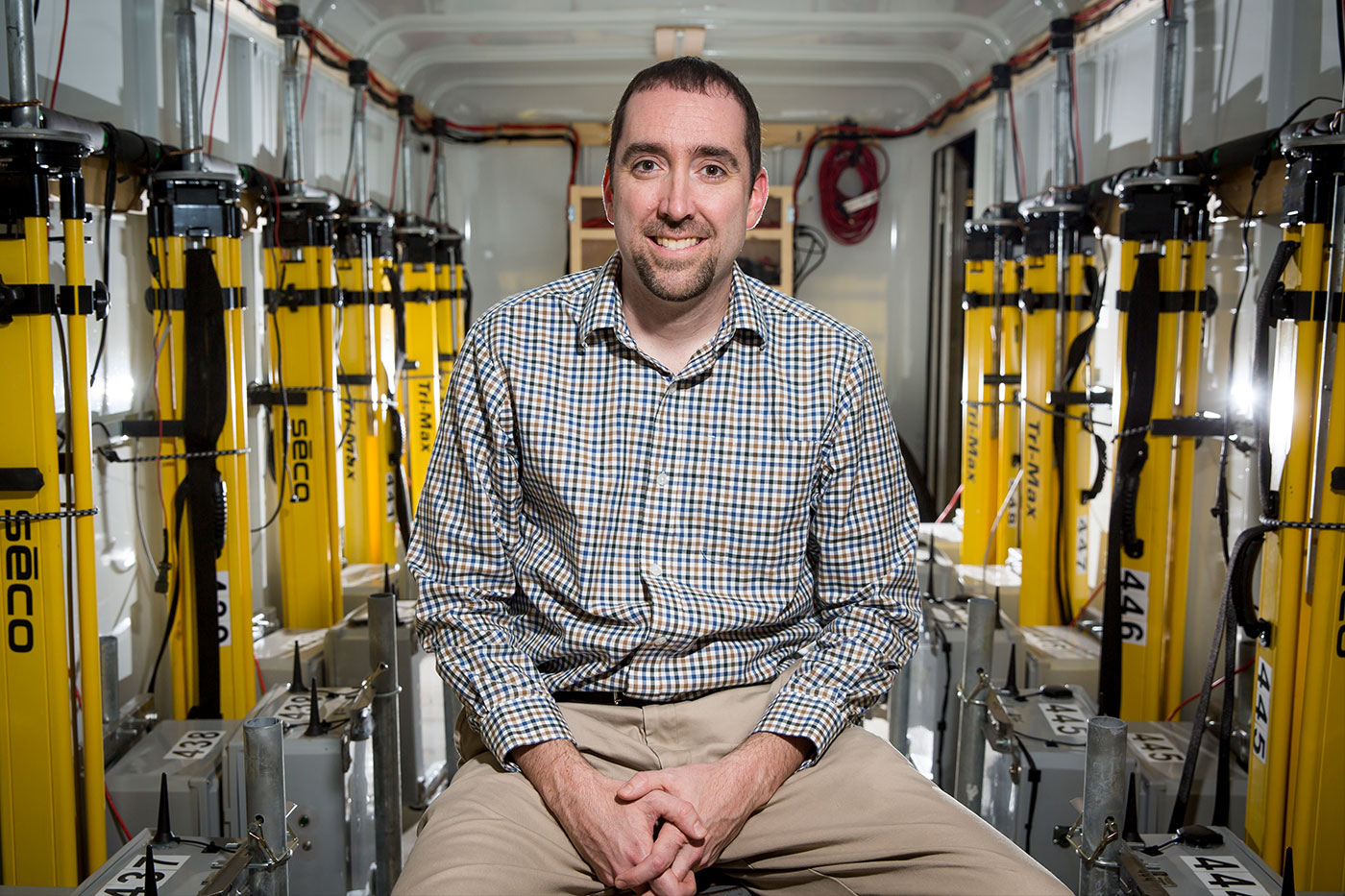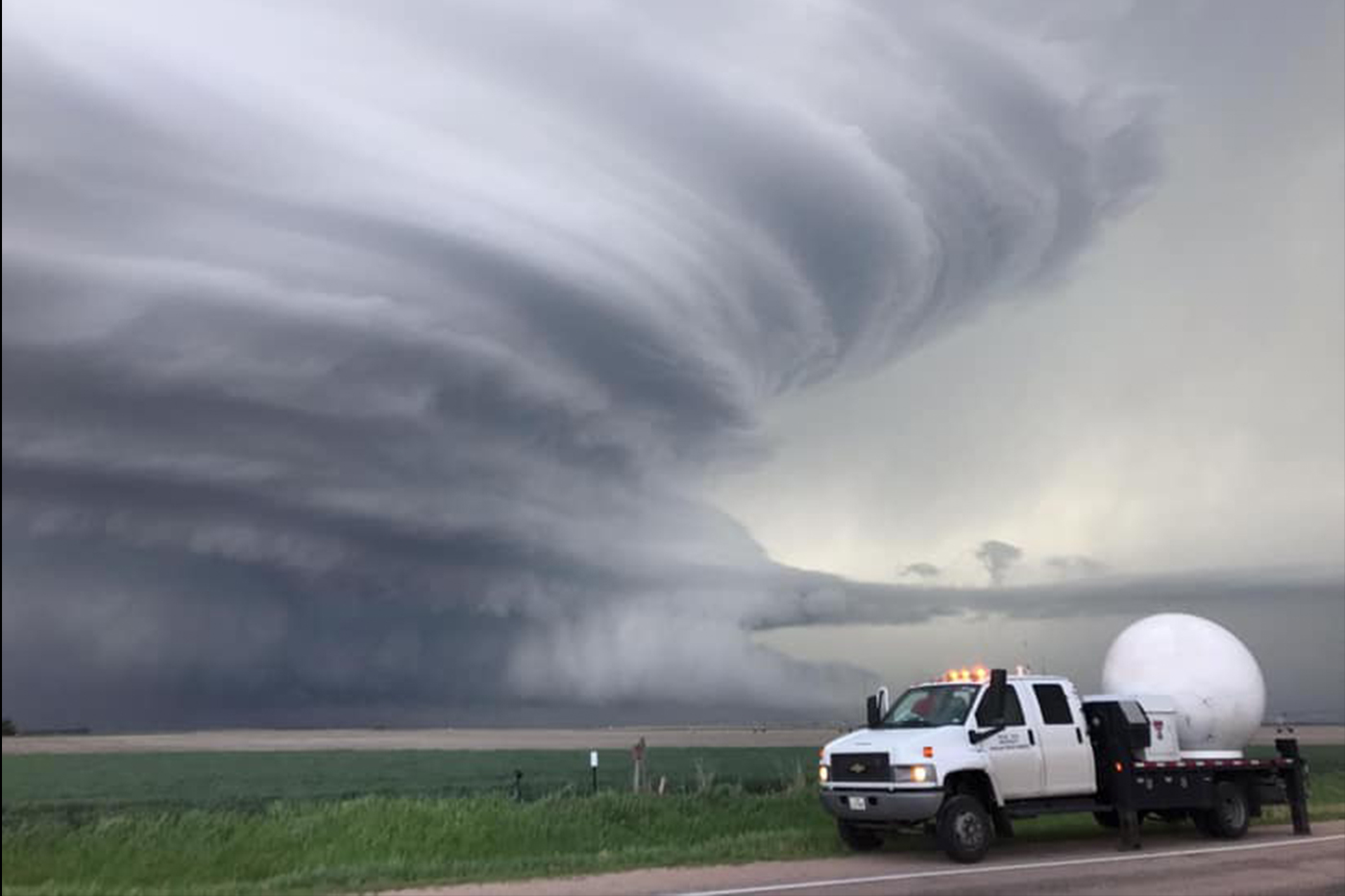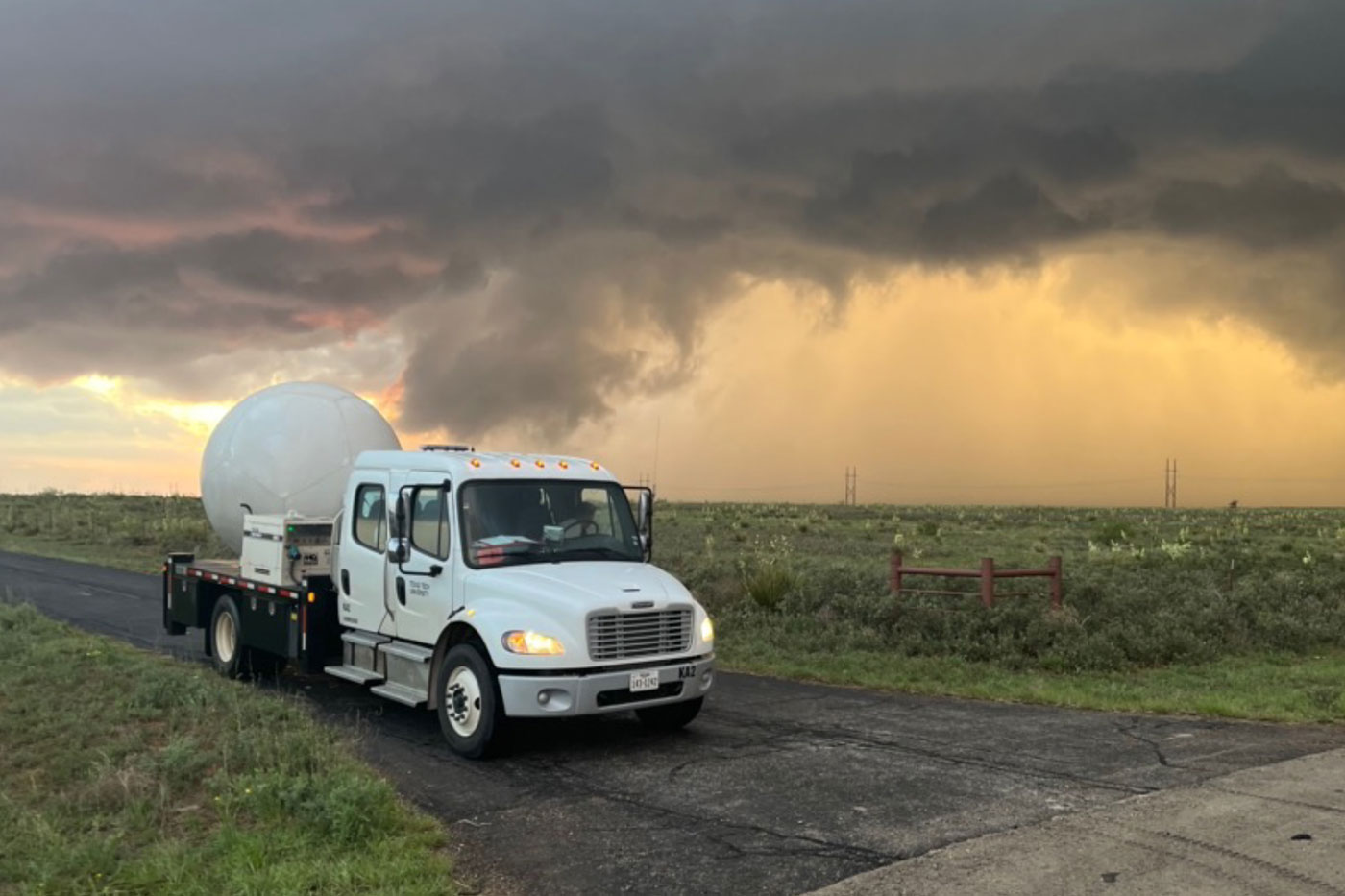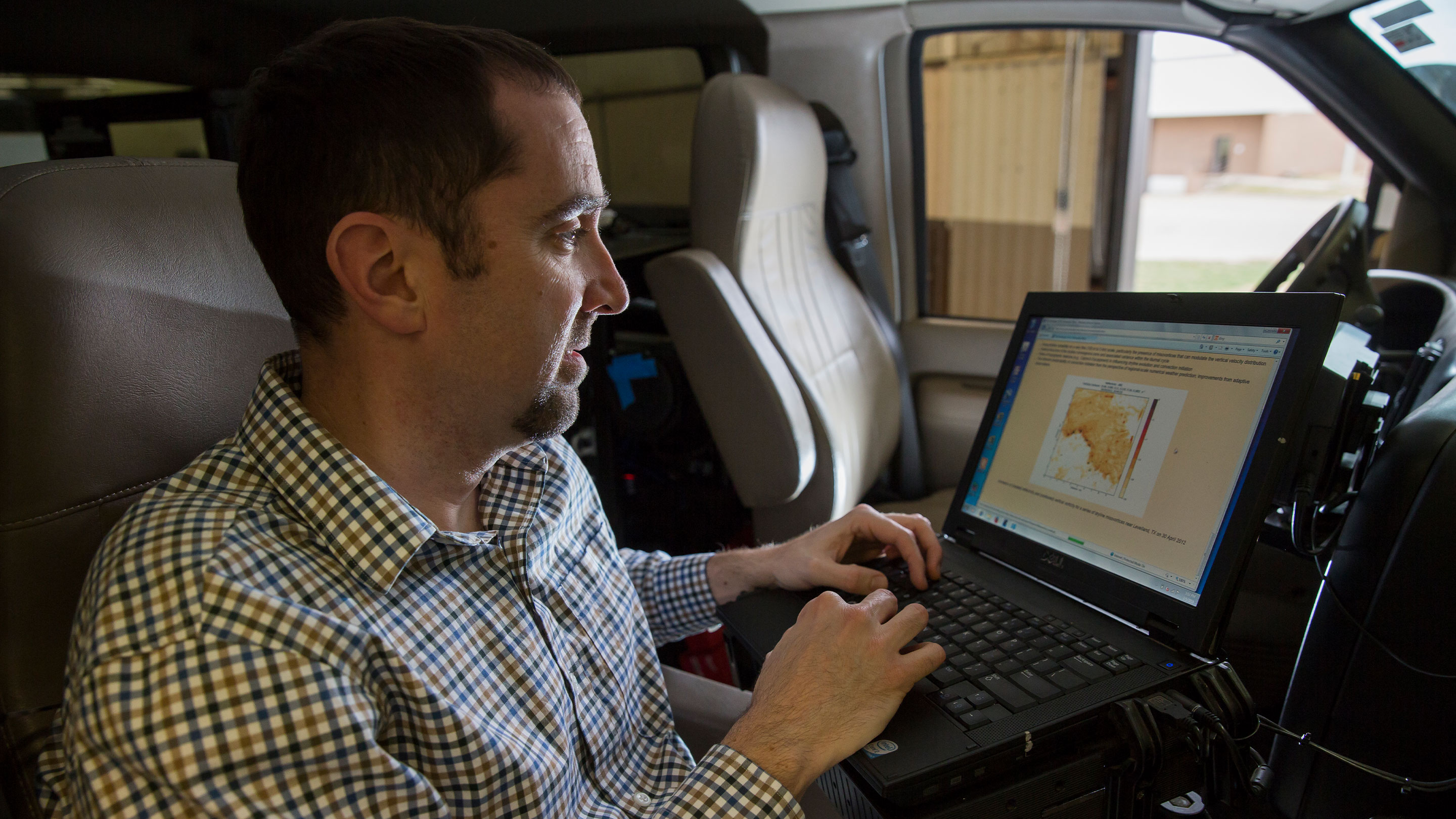Christopher Weiss is working to understand tornadoes better, which will keep communities and people safer.
For as much damage and devastation as tornadoes cause, especially in this part of the country, those who study the seemingly capricious weather events know precious little about what makes them tick.
Christopher Weiss, a professor of atmospheric science in the Department of Geosciences, is trying to change that. His research at Texas Tech University will try to peer inside the different parts of the twister and see what’s going on.
Unsurprisingly, it is not an easy undertaking.
“We want to understand the tornado structure better,” Weiss said. “Our project has two parts. One is understanding how the wind field in a tornado varies from the highest level down to the surface. The other is specifically looking at how a tornado forms and then maintains itself.”

Tornadoes have long fascinated Weiss, despite growing up in Michigan where the ferocious visitors make infrequent appearances. From the time he was a youngster, he tracked tornado stories on television and in newspapers while keeping a detailed map of the places they struck.
Later, during his college days, he came to realize his deep interest in tornadoes and his affinity for mathematics and science fit together nicely.
Suddenly, he found his calling. Or maybe his calling found him.
“It was an intense passion for me even when I was a child,” he said. “I realized later how much I loved math and physics, and I was able to connect the two, make a job out of this, do research and use my talents to accomplish something for the greater good of society.”
Texas Tech’s partners in this project are the National Wind Institute on campus and the National Oceanic and Atmospheric Administration Severe Storms Laboratory. The Norman, Oklahoma, facility will deploy remote resources such as drones to help gauge the amount of damage and measure wind speeds.

The typical tornado is an all-too-familiar site across the region with twisters striking the West Texas communities of Perryton and Matador last June. They drop out of the sky and skitter across the terrain, often leaving a trail of heartbreak and destruction in their wake.
The three-year project will take a closer look at different portions of the tornado column and see what is taking place in terms of wind speeds and other weather-related metrics.
“The wind field varies from the level our radars typically hit to the lowest levels, which is where all the damage is being done,” he said. “We can’t really diagnose the lowest 20 to 30 meters above the ground with operational radar, so this project will use higher frequency radar that will allow us to see details very close to the ground.”
There are other practical aspects to the research. When tornadoes strike populated areas, there is no operational capability to capture their windspeed at the moment of impact. Instead, National Weather Service (NWS) personnel travel to the site later, inspect damage and assess windspeeds based on their findings. An emphasis of the work will be to see how these damage assessments align with the actual measured wind field from research-grade instrumentation.
For those thinking about the 1996 film “Twister” detailing the daring escapades of a group of storm chasers who were trying to learn about the internal workings of a tornado, that’s not what is happening here. That required getting instruments directly in the path of a tornado, which is tricky and dangerous business.
Weiss and the researchers involved in this project will be taking measurements remotely. While they will also be in the field once the severe weather season begins next spring (April through June, primarily), their focus is on gathering data in as safe a manner as possible.
“Scientists have been trying to get instrumentation directly in front of a tornado for decades,” Weiss said. “Occasionally, they get some hits, but the average tornado is rather small, probably fitting inside the football stadium. Trying to anticipate this exact track five or 10 minutes out and getting instruments down safely is tough to do.
“There is naturally some risk inherent to getting the data needed to satisfy our objectives, but we are always very careful to avoid crossing the line.”

Rather, the team will use sophisticated radars from an optimal range, although there is always an element of danger because tornadoes can be unpredictable. If a tornado strikes, the researchers want to be in place to measure not only wind velocity but also the early stages of its development.
When a tornado first forms, it is called a single-cell tornado (picture an immense upright vacuum cleaner). This is when whatever is near the twister is sucked into the rotating wind field.
“Small tornadoes and the early portion of large tornadoes look simple, but as they grow larger, they become much more complicated structures,” Weiss said. “They have descending air in the middle, creating a number of individual sub vortices spinning around like a buzzsaw, and causing all the major damage.”
The project will attempt to capture this evolution from a single-cell to a multiple-cell structure to its dissipation, another aspect of the storms that is little understood. The expectation is to use instruments and techniques to probe storms and build knowledge about them from start to finish.
For Weiss, the more researchers can learn about tornadoes, the better they can get at predicting them, providing more lead time on warnings and reducing false alarm rates. As a result, something known as “warning fatigue” can be reduced where so many warnings are issued that eventually people don’t give them the attention they deserve … until they should.
“We want to make warnings more efficient,” he said. “The false alarm rate on tornado warnings right now is around 75%, which is larger than we would like. We necessarily tend to overwarn and make sure we don’t have an event someone didn’t anticipate. So, you err on the side of caution.
“But if we can understand the genesis of a tornado and what storms are doing to tip us off as far as tornado formation, that’s important. There is potentially a huge societal benefit. If we better understand tornado formation and wind speeds, it should lead to improved building codes and shelter designs and other things that will naturally fall out of having improved characterization of tornadoes.”

